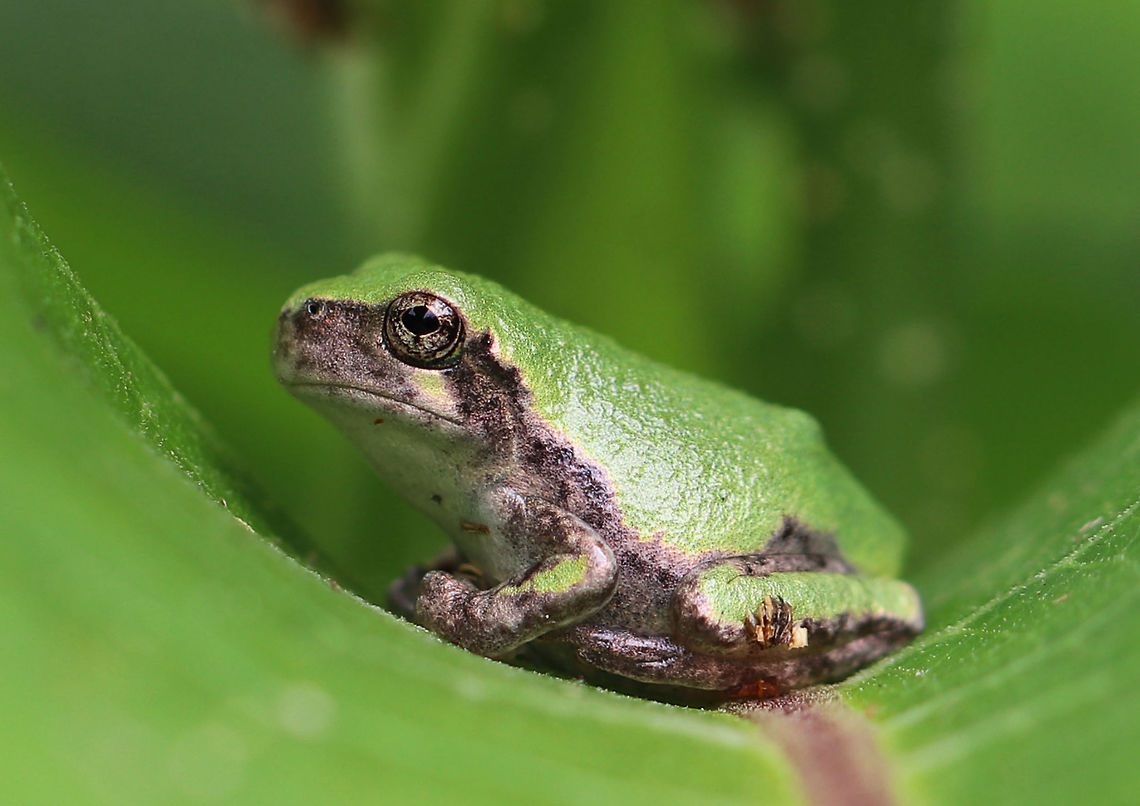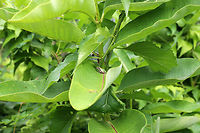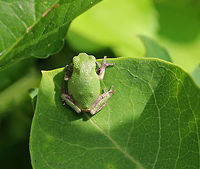 Promoted
Promoted
Gray/Cope's Gray Tree Frog - Hyla sp.
Cope's gray tree frog (Hyla chrysoscelis) is a species of tree frog found in the United States. It is almost indistinguishable from the gray tree frog, Hyla versicolor, and shares much of its geographic range. Both species are variable in color, mottled gray to gray-green, resembling the bark of trees. These are tree frogs of woodland habitats, though they will sometimes travel into more open areas to reach a breeding pond. The only readily noticeable difference between the two species is the call — Cope's has a faster-paced and slightly higher-pitched call than H. versicolor. In addition, H. chrysoscelis is reported to be slightly smaller, more arboreal, and more tolerant of dry conditions than H. versicolor. Microscopic inspection of the chromosomes of H. chrysoscelis and H. versicolor reveals differences in chromosome number.
I think this is Hyla chrysoscelis, but can't be sure. It was tiny (maybe 15 mm long) and green on its dorsal surface. I spotted it on milkweed that bordered a pond.


No species identified
The species on this photo is not identified yet. When signed in, you can identify species on photos that you uploaded. If you have earned the social image editing capability, you can also identify species on photos uploaded by others.

comments (9)
P.S. I have more hole-dwellers to post after I cool down from my hike. :D We have more species than I thought on our land! Posted 7 years ago
"Hyla versicolor, a tetraploid treefrog, is reported to have originated via multiple hybridization events involving three diploid ancestors. Its complex reticulate history provides insights into the roles that polyploidy and hybridization can play in the origin of species." Polyploid Hybrids: Multiple Origins of a Treefrog Species. Robert C.Vrijenhoek, 2006. <a href="https://doi.org/10.1016/j.cub.2006.03.005"; rel="noreferrer nofollow">doi.org/10.1016/j.cub.2006.03.005</a> Posted 5 years ago